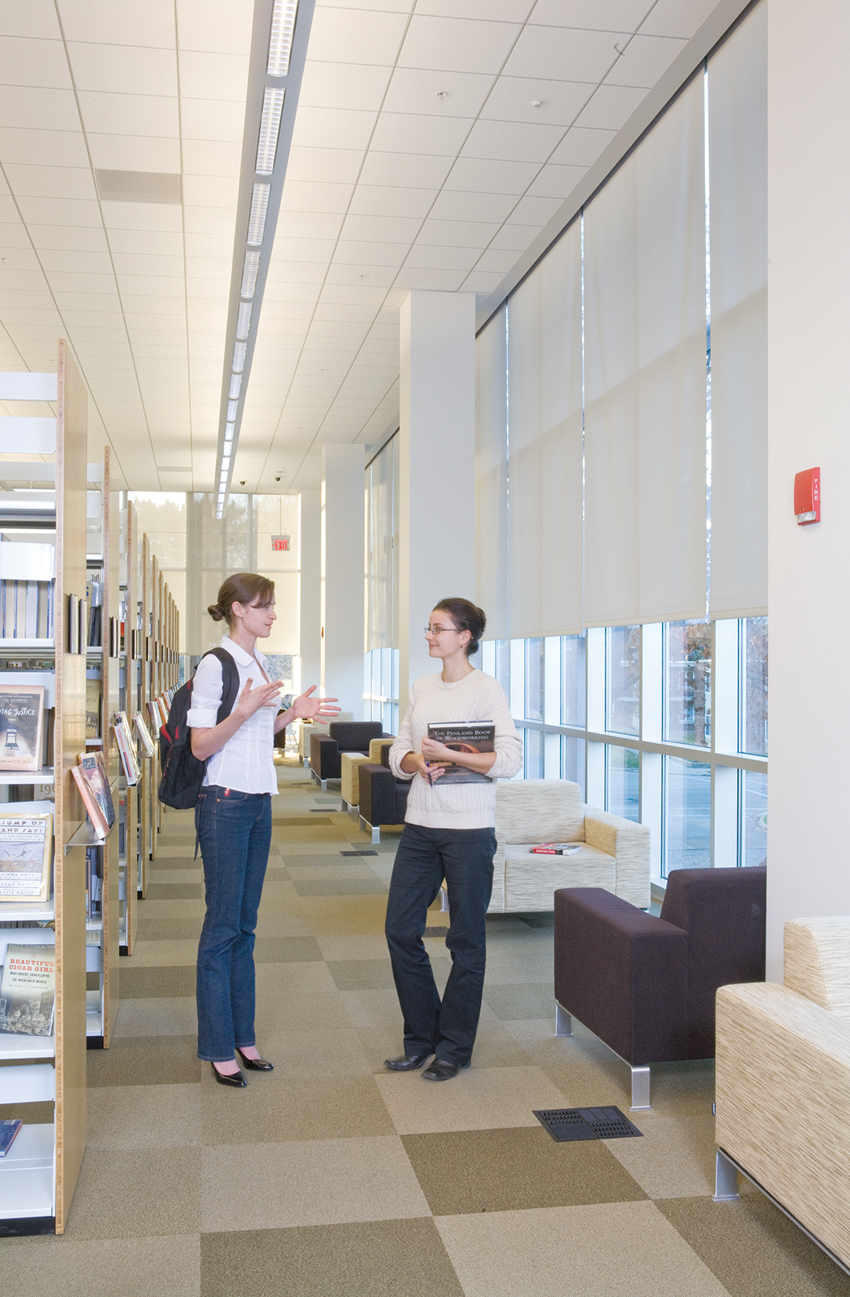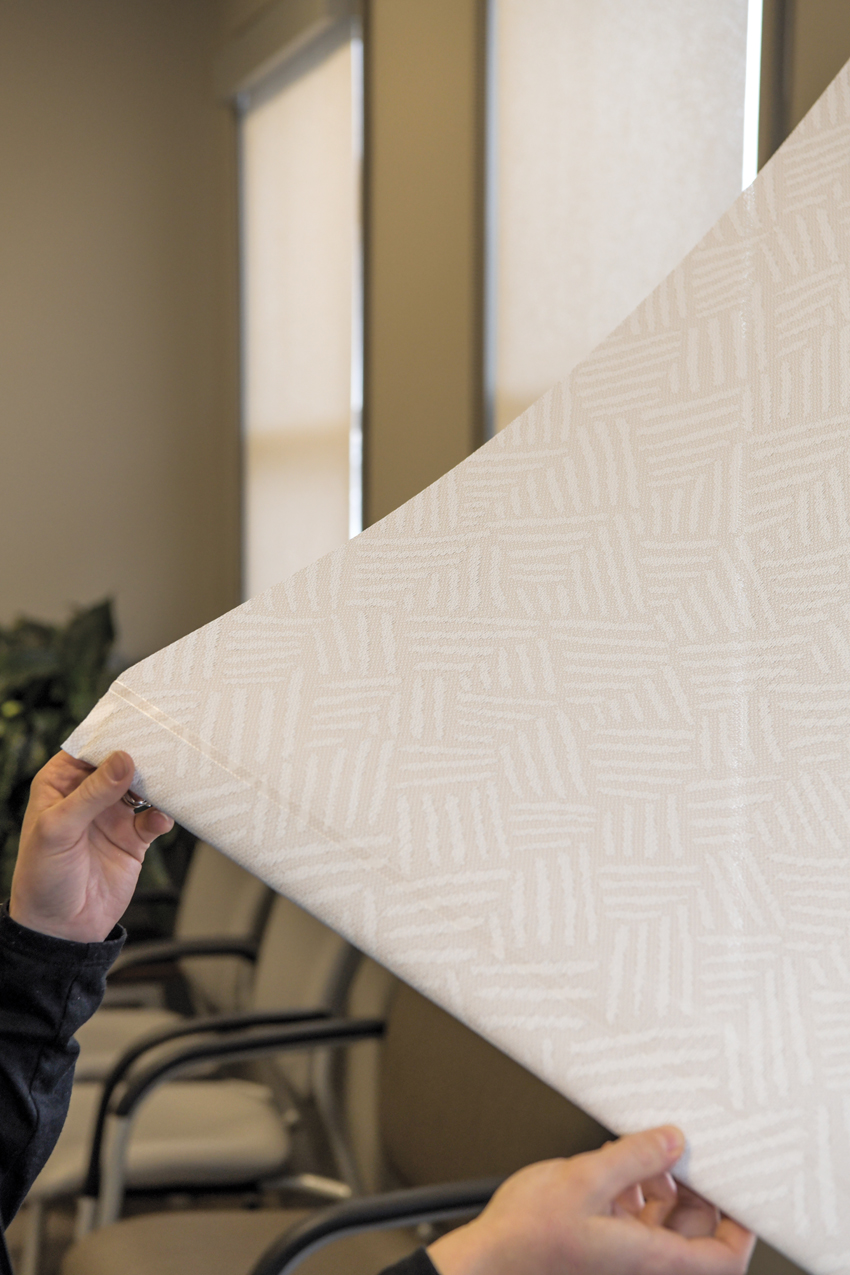Whole Building Approach to Interior Roller Shade Fabric Selections
Learning Objectives:
- Evaluate the whole building impact of roller shade fabrics on thermal comfort, energy efficiency, productivity, aesthetics, and views.
- Identify the characteristics of fiberglass and polyester shades, including the different fabric weave patterns and view-through options.
- Adjust colors, openness factors, and weaves to optimize comfort, performance, and aesthetics for the customized needs of each project application.
- Discuss the benefits of a complex glazing, whole building approach that considers how a fabric performs with the glass as a total system and integrates with the building’s facade, surroundings, geographical location, and orientation.
- Review modeling tools and mock up best practices to optimize shade fabric designs.
Credits:
This course is approved as a Structured Course
This course can be self-reported to the AANB, as per their CE Guidelines
Approved for structured learning
Approved for Core Learning
This course can be self-reported to the NLAA
Course may qualify for Learning Hours with NWTAA
Course eligible for OAA Learning Hours
This course is approved as a core course
This course can be self-reported for Learning Units to the Architectural Institute of British Columbia
When glancing up at the facade of a high-rise, office/medical building, or educational facility, do the interior roller shades blend in seamlessly with the enclosure and surrounding environment, or are they a mishmash of colors and styles, haphazardly raised and lowered?
Beyond aesthetics, fabric shades can make a significant contribution toward whole building performance, health, and wellness.
“It is critical to select the right shade properties to ensure glare protection, reduce energy use, and enhance occupant comfort and well-being,” explains Thanos Tzempelikos, Ph.D., professor of civil engineering, Center for High-Performance Buildings, Purdue University.

Photo: Matt Oberer, MattO Photo
Specifying interior roller shade fabrics is not simply an interior design decision.
As architects evaluate fabric shade options, including weave pattern, openness factor, color, and material composition, Brandon Andow, Ph.D., NCARB, senior building performance analyst and senior associate at EYP Architecture & Engineering in Denver, explains that the shades’ properties of visible light transmission (VLT), absorption, reflection, scattering, and emissivity will not only affect views and daylighting but also significantly impact HVAC loads from heat and radiation transfer through the fenestration, aesthetics, thermal comfort and circadian health of occupants, productivity, and surface condensation.
In optimally choosing shade fabrics to best compliment whole building performance and aesthetics, architects must be knowledgeable about the different materials, weaves, openness factors, and performance standards.

Photo: Barry Rustin
The main considerations in selecting a shade fabric should be related to performance factors, such as glare reduction, thermal comfort, and occupant comfort, as shown here at the Champaign Public Library in Champaign, Illinois.
Fiberglass Versus Polyester
Starting with the material selection, the composition of the yarn core forming the fabric roller shades is typically fiberglass or polyester. To select the best material for the application, a review of each selection’s characteristics is helpful.
Fiberglass is a fiber produced mainly from sand, and polyester is a synthetic fiber derived from coal, air, water, and petroleum. A typical fiberglass core yarn holds 200–400 filaments, and a polyester core yarn contains 50–100 filaments. Most of the world’s fiberglass shade fabrics are woven in the United States and Europe.
Technically speaking, polyester core yarns have a higher strength rating than fiberglass. However, pound for pound, fiberglass is actually stronger than steel. So practically speaking, strength values are negligible as both materials are more than strong enough for roller shade applications.
Because fiberglass is not affected by heat, it has greater dimensional stability. This means that shades have less fullness and limits on motorized units will rarely have to be reset. Generally speaking, fiberglass yarn is thinner and therefore offers somewhat better glare control and improved view-through characteristics. Its high dimensional stability makes it more suitable for tensioned shades. Its thinness and light weight also mean an overall smaller profile, which means smaller rollers, clutches, motors, bracketry, and other hardware, as well as lower cost. At the same time, recent developments in polyester yarns have made them more competitive in the realm of thinness and weight. That said, heavier and thicker fabrics require bigger head boxes that use more raw materials, increasing cost, and can be more visible.
Another characteristic of both materials is the fact that they can be coated by PVC vinyl. This coating provides color, durability, UV resistance, and other properties, including antimicrobial effectiveness, fungal resistance, colorfastness, lightfastness, and washability.
Where coatings for fiberglass and polyester shade fabrics vary is in their proprietary blends of UV stabilizers, pigments, plasticizers, and fire retardants. Some polyester fabrics on the market are made with non-PVC coatings, which is an eco-friendly option. There is also a polyester product that is Cradle-to-Cradle Certified Bronze and therefore meets rigorous criteria in the realm of material health, material reutilization, energy, water, and social responsibility.
There are also several fiberglass and polyester fabrics that are GREENGUARD Gold certified for low chemical emissions.
Specifiers will also want to consider the extent to which products are prone to frayed edges. Some manufacturers utilize ultrasonic technology to create a clean, non-frayed edge when cutting the shade fabrics. However, this only works with polyester since the material is sensitive to heat. There is a small possibility that the polyester fabric will fray after some time in the field, but this can be remedied with the careful application of heat/flame to melt the frayed pieces away.
With fiberglass, advanced cutting methods help to reduce the likelihood of fraying. If it does become an issue, scissors can be used to trim down stray yarns.

Photo courtesy of Phifer Inc.
The type of weave can impact view-through characteristics of the shade fabric, as well as the look and feel of the material.
















